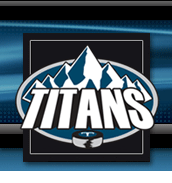HOCKEY 101: Hockey Basics
Equipment
Player
Each team has five skaters and one goalie on the ice at any one time, and substitutions occur as often as every 40 to 60 seconds. Each menÌs team shall be allowed a maximum of 20 players and 2 goalkeepers for a total of 22 players. Each womenÌs team is allowed two goalies and eighteen players for a total of 20 players. The women may also register an emergency goalie who does not dress with the team and who will only receive accreditation if a primary goalie is injured.
Equipment
The official playing rules specify the use of protective equipment out of concern for the orderly playing of the game, and for the safety, health and welfare of participants. Player and goalkeeper equipment shall consist of sticks, skates, protective equipment and uniforms. All protective equipment except gloves, helmets and goalkeepersÌ leg guards must be worn entirely underneath the uniform.
1. Stick: Sticks are made of wood or other material approved by the IIHF, such as aluminum or plastic. The stick must not have any projections and all edges must be beveled. Adhesive non-fluorescent tape of any color may be wrapped around the stick at any place. Sticks are prohibited from being curved more than 1.5 centimeters.
2. Puck: The puck is made of vulcanized rubber or other material approved by the IIHF and is primarily black in color. The puck is 2.54 cm (1 inch) thick and 7.62 cm (3 inches) in diameter and must weigh between 156 and 170 grams. It reaches speeds of more that 150-km per hour.
3. Skates: Players must wear ICE HOCKEY SKATES with safety heel guards as stipulated by international standards.
4. Shin guards: A device contoured and molded to protect the shin, knee and calf.
5. Gloves: The playerÌs gloves must cover hand and wrist and their palm must not be removed to permit the use of bare hands.
6. Elbow pads: A molded pad that protects the elbow and elbow joint and provides forearm protection.
7. Shoulder pad: Padding that provides extra protection for critical points of the shoulder, biceps, sternum, shoulder blade and spine.
8. Helmet: Players must wear a hockey helmet that meets the approved international standards with chinstrap properly fastened. A helmet must be worn so that the lower edge of the helmet is not more than one finger-width above the eyebrows, and there should only be enough room between the strap and the chin to insert one finger.
9. Visor: A clear plastic shield attached to the helmet that covers down to the lower edge of the playerÌs nose. Male players born after December 31, 1974 shall wear as a minimum, a visor that meets approved international standards. All women players must wear full face masks.
10. Goalkeepers' equipment: With the exception of skates and stick, all equipment worn by a goalkeeper must be constructed solely for the purpose of protecting the head and body and must not include any garment or contrivance that would give the goalkeeper undue assistance in keeping goal. GoalkeepersÌ equipment includes a goalkeeper stick, goalkeeper skates, blocking glove, catching glove, helmet with full face mask and leg guards.
« Back to Hockey 101

